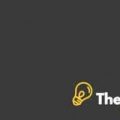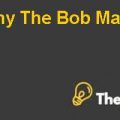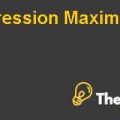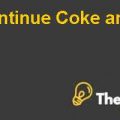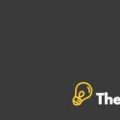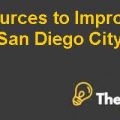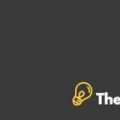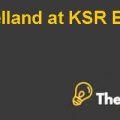Analysis of the loan using the 5 c model
Case Study Solution
Capacity
This part focuses on the question as to whether the company will pay the loan in the future. By looking at the financial statement, the performance of the company seems to be increasing as the revenue has increased from 6.31% to 17.60% over the previous year. Furthermore, the net profit margin has also increased from 14% to 22%. However, these sales are on credit because the receivables have increased as compared to the previous year. Moreover, the payables days have increased, which shows that the company has cash flow problem, therefore there is a doubt that company may not pay the loan.
Capital:
After analyzing the case study, the company has heavily invested in property plant and equipment. All of the property is already mortgaged to the bank to take the loan of 6 million, therefore the company has no other fixed assets to pay the loan when it defaults.
Collateral
The company has already mortagaged 16 million of property to take the loan of 6 million. Therefore, if the bank were to allow the company a 50% loan to the total fair market value of the assets mortgaged, then it would still be acceptable to pay loan amounted to 8 million. However, the bank can recover full amount if the company defaults.
Conditions
The company will invest full amount in its working capital. However, this will not increase its revenue, but would help them to maintain its sales as working capital would help them to fulfill the day to day working capital.
Character
After analyzing the case study, it does not seem that the company has defaulted in past however, it has a clean record in past. However, if the company defaults then the bank can easily recover their amount.
Financial performance: - (cash flow statement and ratio analysis)
By looking at the ratio analysis, it seems the receivables days have decreased from the previous year, which shows that the management of the company is able to recover the payment from customers. However, the payable days have increased from the previous year, which indicates cash flow problems.
The gearing ratio (debt to equity) decreased from 96% to 66% over the three years, but still seems to be significantly high. However, still the company has excellent interest cover, which indicates that the company has enough cash to pay its interest expense from its earnings.
Furthermore, by looking at the cash flow statement, it seems that the company that company has no cash at the year end to manage its working capital. In the current year, the company sold some buildings this year and purchased equipment.
Overall conclusion:
The performance of the company is excellent (increases in revenues, profit margins) however, it has some cash flow problems in managing its day to day working capital.
Collateral analysis:-
After analyzing the case study, it has been estimated that the company will cover only 95% of its total account receivable because some provisions have been made for the bad debt, therefore this will be considered as good.
Furthermore, it was estimated that raw material, work in process and finished goods only recover 95% of its current value. I made provision of some wastage, changing customers’ needs as if fashion changes, then they would not buy finished good prepared by the company, thus this is ranked as good.
The land has not depreciated and will recover its full amount, however the building will depreciate and will only recover 20% of its current value. I assumed that 50% is land and 50% is building in total value on land and building, therefore land is graded as excellent and building is graded as fair. Equipment is the depreciating asset hence, I estimated that it will cover only 5% in future as salvage value so this is graded as poor.
Risk involved by lender:-
Giving loan to the company, there is only one risk that the company may default and may not pay the interest and principal amount. There are some other external risks such as government’s restriction to sell the mortgaged property or some political issues.
Decide whether to increase the working capital loan and provide supporting rational for the decision.
Analysis of the loan using the 5 c model Harvard Case Solution & Analysis
According to the above analysis, the bank should extend the loan from $6 million to $8 million. The rationale behind the decision is that the company has already mortgaged its property plant and equipment worth around $16 million. Therefore, if the loan is extended to $8 million, then the bank can easily recover its principle and interest amount.
Furthermore, the company had a good record in the past (i.e. no default in past) and the revenues have been increasing on a yearly basis...................
This is just a sample partial case solution. Please place the order on the website to order your own originally done case solution

